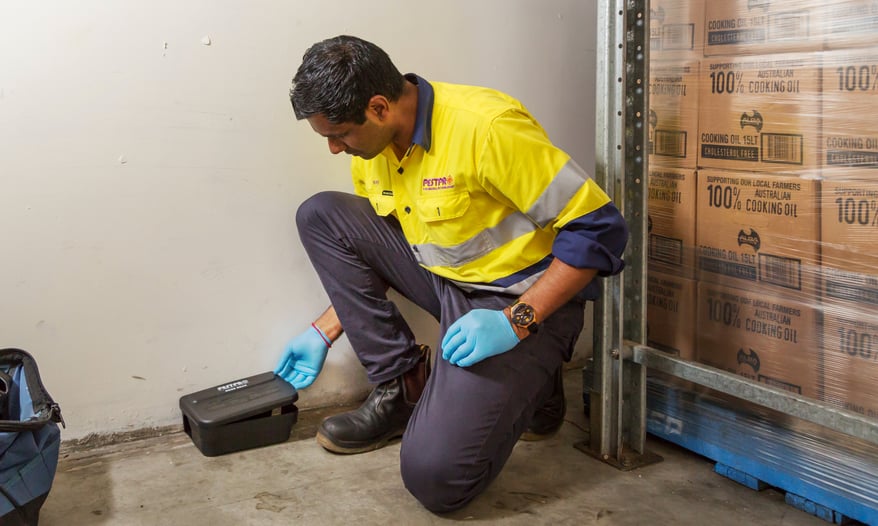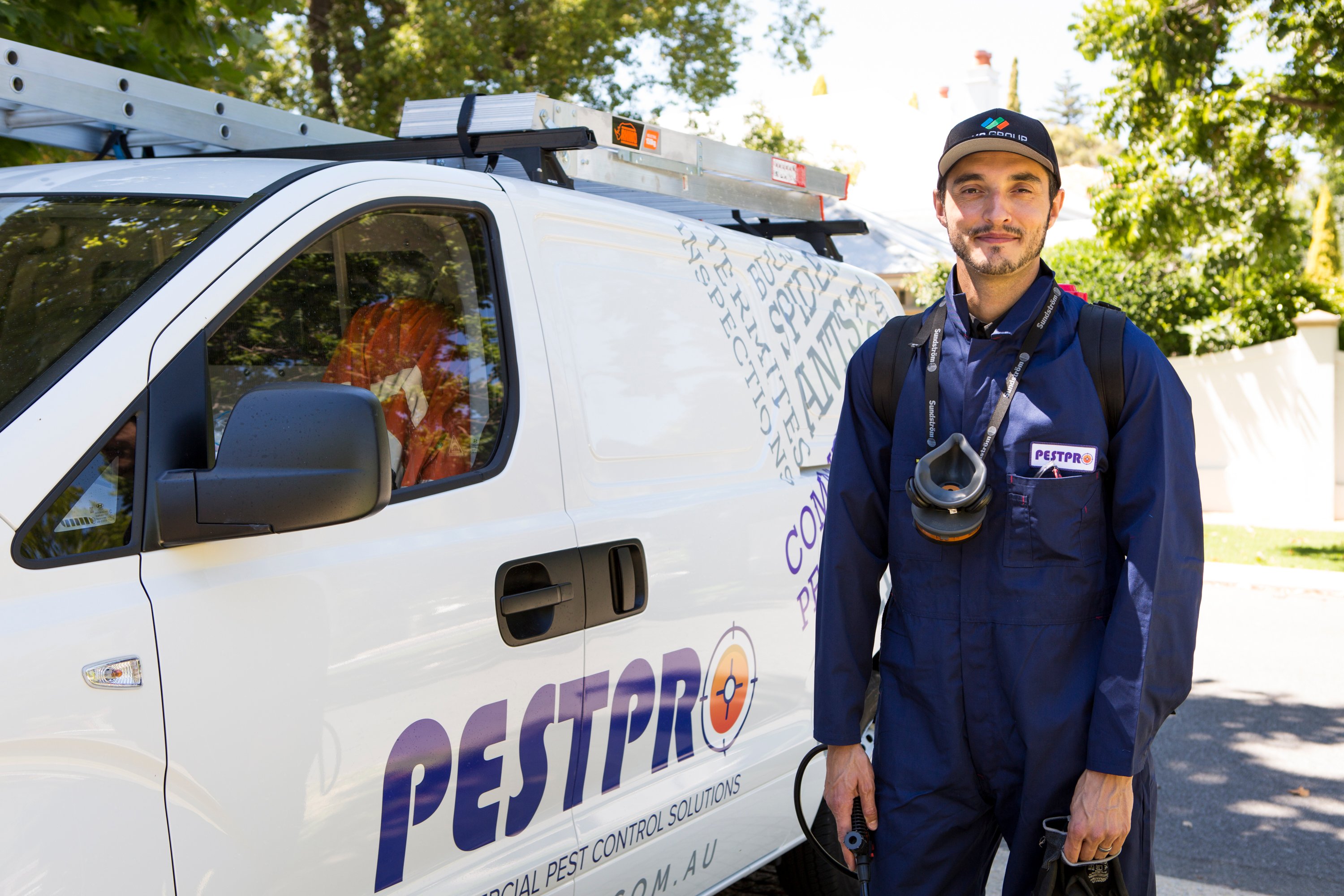Why Restaurants Should Prioritise Pest Control in their Sanitisation Routine
Did you know that pests are one of the most common reasons food establishments get closed down? That's because most restaurant owners ignore the importance of pest control as a part of their overall hygiene standards.
It goes without saying that most foodservice professionals know to always be diligent with their cleanliness. This means maintaining a high standard of sanitisation when it comes to kitchen equipment, utensils, and surfaces as a means of avoiding foodborne illness. If this were overlooked, customers would quickly realise or get sick and never return.
Spraying chemical cleaners and using proper equipment ensures compliance with health code regulations, which keeps guests happy and inspectors at bay. But what about pests? While you were fixated on sanitising your ovens and dishwashers, did you notice what was crawling around above them?
Unfortunately, many businesses fail to realise that pests are just as important to address when it comes to sanitation. Commercial pest control should be a priority in your restaurant's upkeep, as without it, you risk your guests, serious health code infractions, and costly citations down the line.
Common Restaurant Pests
Pest control reduces the likelihood of food poisoning. When you’re dealing with pests in an environment as food-focused as a restaurant, the chance of food poisoning increases significantly. If you think the only impact of pests in your restaurant is a few ants here and there, you're mistaken. For instance, if a mouse or rat were to get into some bread crumbs left out, it could leave their urine or faeces on it, which would contaminate the food when eaten. Rodents are known to carry numerous diseases that can be fatal if transmitted to humans, and it doesn't stop with them.
Restaurant-loving pests include but are not limited to:
Rats and mice are extremely common pests found in restaurants; they can spread over 30 diseases to humans directly (through contact with faeces, urine or saliva on food and equipment), as well as indirectly (ticks, mites or fleas that have fed on it).
The most common diseases they carry include:
- Salmonellosis, a bacterial infection causing diarrhoea
- Fever and upset stomach
- Leptospirosis, a bacterial infection causing flu-like symptoms
- Jaundice and red eyes
- Hantavirus, a respiratory infection causing flu-like symptoms, dizziness, stomach cramps and extreme shortness of breath
Cockroaches
These crawling insects are the number one culprit in any food handling business because of their small size and ability to hide in tight spaces (think drains, sinks and pipes), which are hard to reach using normal sanitisation methods.
The most common diseases they carry include:
- E.coli, a bacterial infection causing fever
- Bloody diarrhoea and vomiting
- Staphylococcus, a bacterial skin infection causing painful skin sores and blisters
- Streptococcus, a bacterial infection causing fever, sore throat and difficulty swallowing
Their faecal droppings and skin sheds also contain allergens that trigger asthma.
Flies
Restaurants are like breeding grounds for flies, which are known to transmit over 200 different pathogens (more than twice as many as cockroaches), leaving thousands of germs behind every time they land.
The most common diseases they carry include:
- Dysentery, an intestinal infection causing bloody diarrhoea
- Hepatitis A, a highly contagious liver infection causing fever
- Loss of appetite
- Jaundice and stomach pain
- Cholera, a bacterial infection causing diarrhoea, dehydration and possibly death
Stored Product Insects
These pests (beetles, moths, psocids and others) have destructive feeding habits and are regarded as the most expensive pest issue due to the repair costs they can inflict on a business. Unlike previously-mentioned pests, there is no significant health risk to humans, but they may contaminate your food with debris.
Sometimes the devil really is in the details... if you look close enough! These pests can quickly become a major problem for your restaurant and can cause serious health issues for customers which, in turn, could damage your reputation and cost you thousands of dollars in legal fees, fines, and lost business.
Turning a Blind Eye Could Cost You
The damage that rats, mice, cockroaches, flies and SPIs can cause as soon as they enter a food facility can be massive and chew up a business’ money through:
- Property damage. Holes bored through walls and food containers and chewed electrical wiring eat into your profits.
- Loss of public confidence. The sight of flies in a dining area or roaches skirting across the floor creates negative impressions about your food handling practices, which decreases consumer trust.
- Business closure. If not properly handled, pest infestation may lead to temporary or permanent shut down of your business operations.
Not only could a nasty bug infestation be off-putting, but you risk the health of your customers and employees when pest control is not prioritised. If people getting seriously sick at your establishment wasn't enough to scare you, maybe the money bleeding out of your pocket as a result will.
Failing an inspection
Consider the fines you could get hit with by health inspectors when you are found failing the minimum standards set by Food Standards Code Australia. The responsibility to meet these guidelines falls onto you as a business owner, and so does the $40,000 fine (individual) or upwards of $200,000 (corporate). Add onto that the thousands of dollars you could potentially lose for every week your restaurant stays closed down post-inspection, losing out on revenue.
Of course, you’ll have to take care of that pesky problem in the meantime. But it also means giving more money to professionals to help rectify the issue. This is why it's critical that you have a documented pest management program in place, which is monitored and kept up to date to ensure pests in your restaurant don't become a problem.
Negligence Charges
Each year there are approximately 4.1 million cases of foodborne gastroenteritis in Australia, and restaurants are a common culprit of these foodborne illnesses. Failure to meet the minimum food and safety guidelines that leads to severe health complications for your guest could likely mean negligent criminal charges, as restaurant owners owe their customers a duty to not serve contaminated food.
The laws surrounding that responsibility vary from place to place, but in some states, you can be sued based on negligence for serving unsafe or unhealthy food to customers. In most cases, this means that you didn't follow health codes and sanitary procedures (or didn't have them at all), which resulted in a customer getting sick. In these cases, it doesn't matter if an inspector came by and gave your establishment a clean bill of health; you're still liable for your actions (or inaction).
To avoid these lawsuits, restaurant owners need to focus on pest control as part of their overall sanitisation plan, or otherwise be ready to dish out hundreds of thousands on settlement cases.
How to Get Rid of These Unwelcome Guests
Not to be confused with sanitisation, pest control involves keeping out unwanted animals and insects that can carry disease and create unsanitary conditions. While the two go hand in hand, you may not realise that they have entirely different processes. Many restaurant owners often neglect pest control without knowing it.
Maybe you are now realising you’re guilty of this yourself and are feeling inspired to take matters into your own hands? While you are free to individually tackle pest control for your business, the reality is that it can be quite a daunting undertaking, so be prepared to do your research. The best pest control processes should start with basics such as:
- Sealing off all possible entry points, including cracks and crevices in exterior walls, as well as windows and doors.
- Securing all food items at all times, maintaining proper food placement, and cleaning food surroundings.
- Training staff members to recognise possible warning signs and log daily sightings.
- Implementing well-thought-out poison placement plans around the establishment.
- Scheduling routine inspections.
Unfortunately today, more and more restaurant owners around the world are learning the hard way that pests can get into their consumers’ food regardless of how good their food handling and sanitisation practices are. As a result, hiring a pest infestation control company to handle it for them is becoming the practical, more trusted option.

Costs of Pest Control
Professional pest services provide faster and more effective results than do-it-yourself methods in almost all cases. That’s because they do the research for you, knowing which products to use, how to use them, how to remove pests (and keep them away), and ultimately ensure your restaurant is healthy for food production. They won't let one unlucky guest getting sick – even if it's not from your food – spark an investigation that risks your reputation, wallet, and business.
That being said, food handling is its own beast when it comes to costs. Many new restaurant owners don’t realise the expenses associated with sanitisation upkeep alone. This includes, but is not limited to:
- Chemical cleaners required for daily usage
- Linen cleaning (dish rags, tablecloths and napkins) and deliveries
- Uniform services
- Refrigeration and food storage
- Bar mats and carpet services
You might be thinking pest control seems like an unnecessary additional cost on top of it all, but that idea couldn’t be more wrong. Sanitisation alone is not enough to avoid a pest infestation, and if you’re choosing not to cover all your bases, what’s the point in throwing away money on sanitisation services at all? You need both.
Since pest control services are all unique and vary in what they offer, prices range. Some are more expensive with personalised weekly check-ins and training for your staff. Meanwhile, others are more economical, simply encompassing dropping off poisons when necessary and providing monthly log updates. There is no one-price-fits-all answer; before you try cutting costs and neglecting this service, remember how important it is in such a high-risk area and consider first restructuring your other services or budget to accommodate. Cost is always on everyone’s mind, but skimping out could cost you your business.
Bundled Services
Many sanitisation companies offer bundles that can help provide an overall, easier, more cost-effective experience managing sanitary standards. Unfortunately, not all offer pest services. That’s because for many, the importance of sanitisation goes without saying, but it’s completely independent of pest control. While it is true that they each require their own measures and efforts, the reality is that they also often overlap, ultimately going hand in hand. One cannot survive without the other.
Improper cleanliness standards, like dirty surfaces and poorly maintained garbage, attract pests inevitably. Conversely, you can have a great sanitisation service provider and a ‘spotless’ kitchen, but if rats are getting in through the cracks in your exterior, it’s not going to stay spotless, will it?
The proper pest control provider can maintain the level of cleanliness and sanitising your restaurant needs, and it no longer has to break the bank. Luckily, some companies are starting to expand their services by bundling sanitary services with pest control, as more and more businesses are struggling with this issue. With these bundles becoming more available, you no longer have to sacrifice quality and can rest assured that you’ve covered all your bases. These discounted deals mean you can get what you need while sticking to your budget and paying a fair price. Pest control no longer has to be a second thought to sanitisation.

How to Find the Right Pest Control Company
Not all pest control companies are created equal. A good pest control provider won't just show up once and say they've done their job. They'll have a maintenance plan that involves routine inspections and visits that ensure your restaurant remains pest-free.
Here are some things to consider when shopping around for a pest control company for your restaurant:
- Credentials and training
- Reviews and testimonials from others who have tested out their services
- Costs
- Professionalism and reputation
It’s a decision that requires careful analysis. If you’re looking for a reliable company you can trust, we suggest Pestpro for all your pest control needs in the future.
Pestpro falls under the SWS Group which is renowned for its expertise. This leading pest control company offers pest/sanitisation bundle services that offer quality for a discounted price. They also meet the requirements of the food processing and food & beverage facilities operating under the HACCP based food safety program. With their award-winning training and advanced technology, your Pestpro specialist will look for conditions that invite pests, tackle current infestations, and stop their life cycle to prevent future invaders. To make use of our vast pest control services available and ensure your surroundings are pest-free, contact us to get a quote today.














.png)
